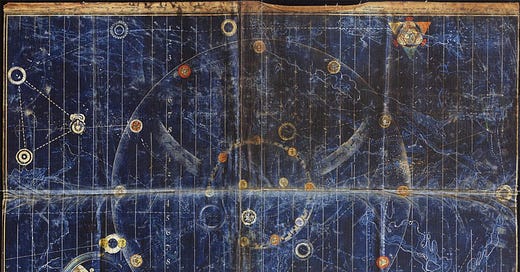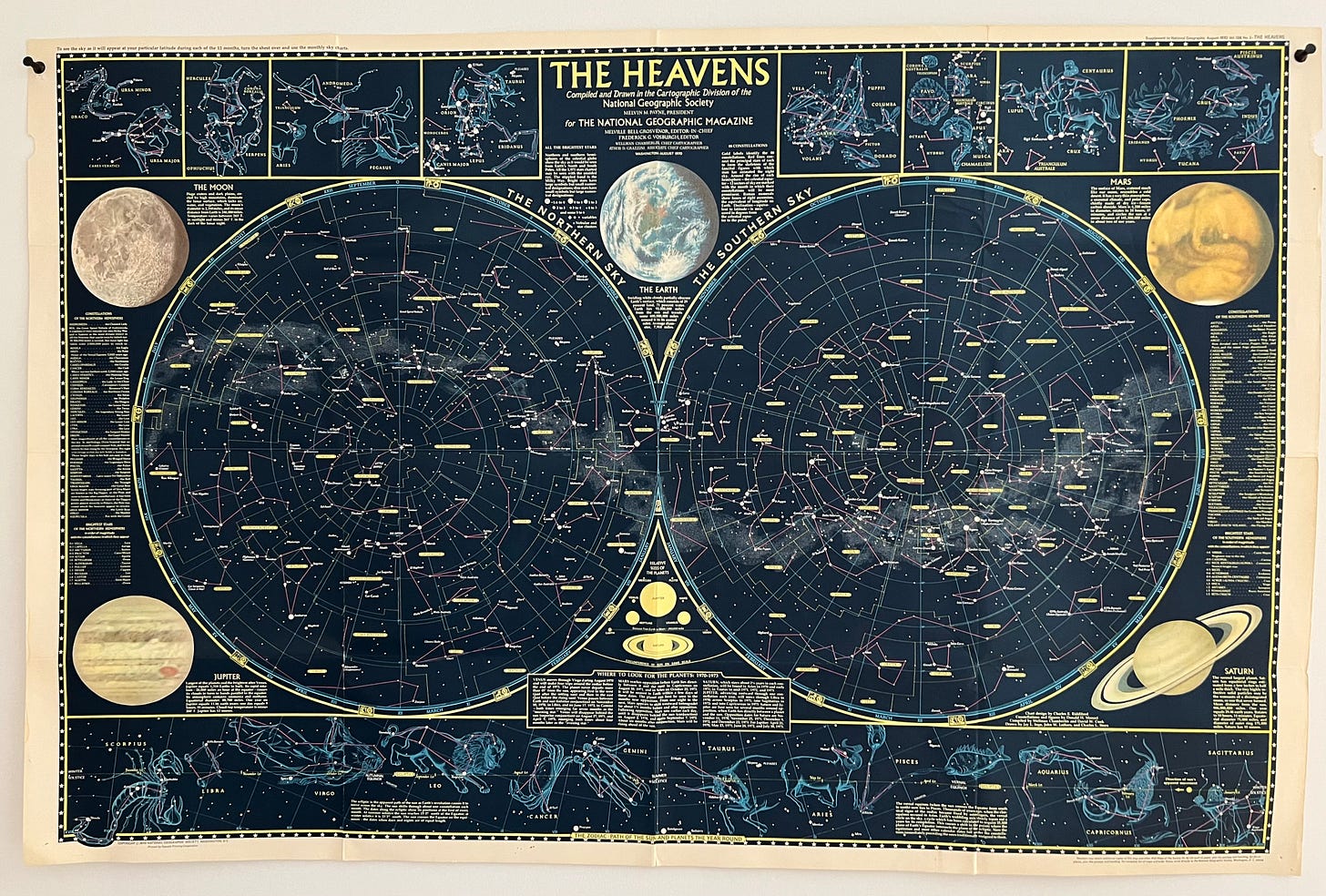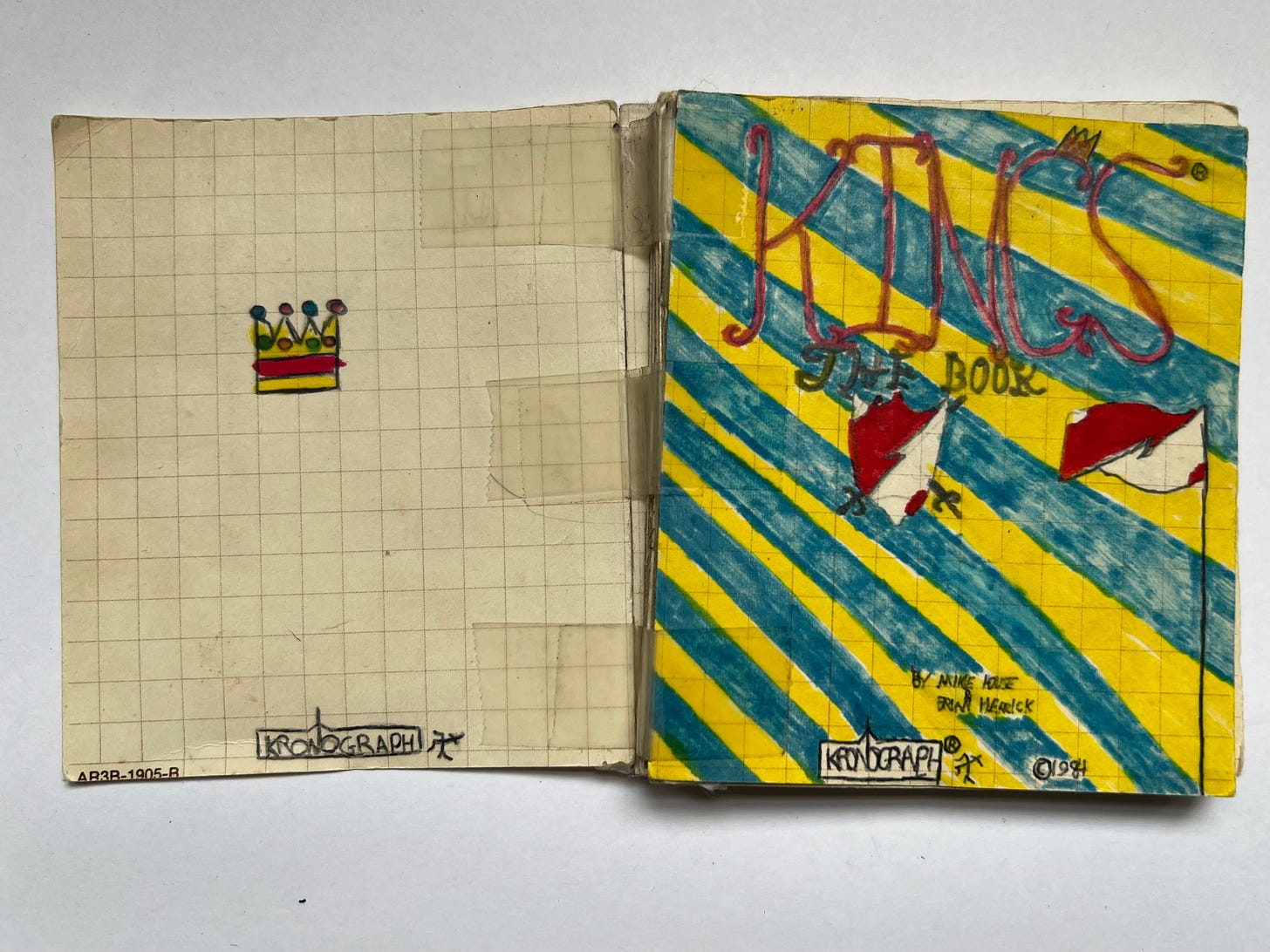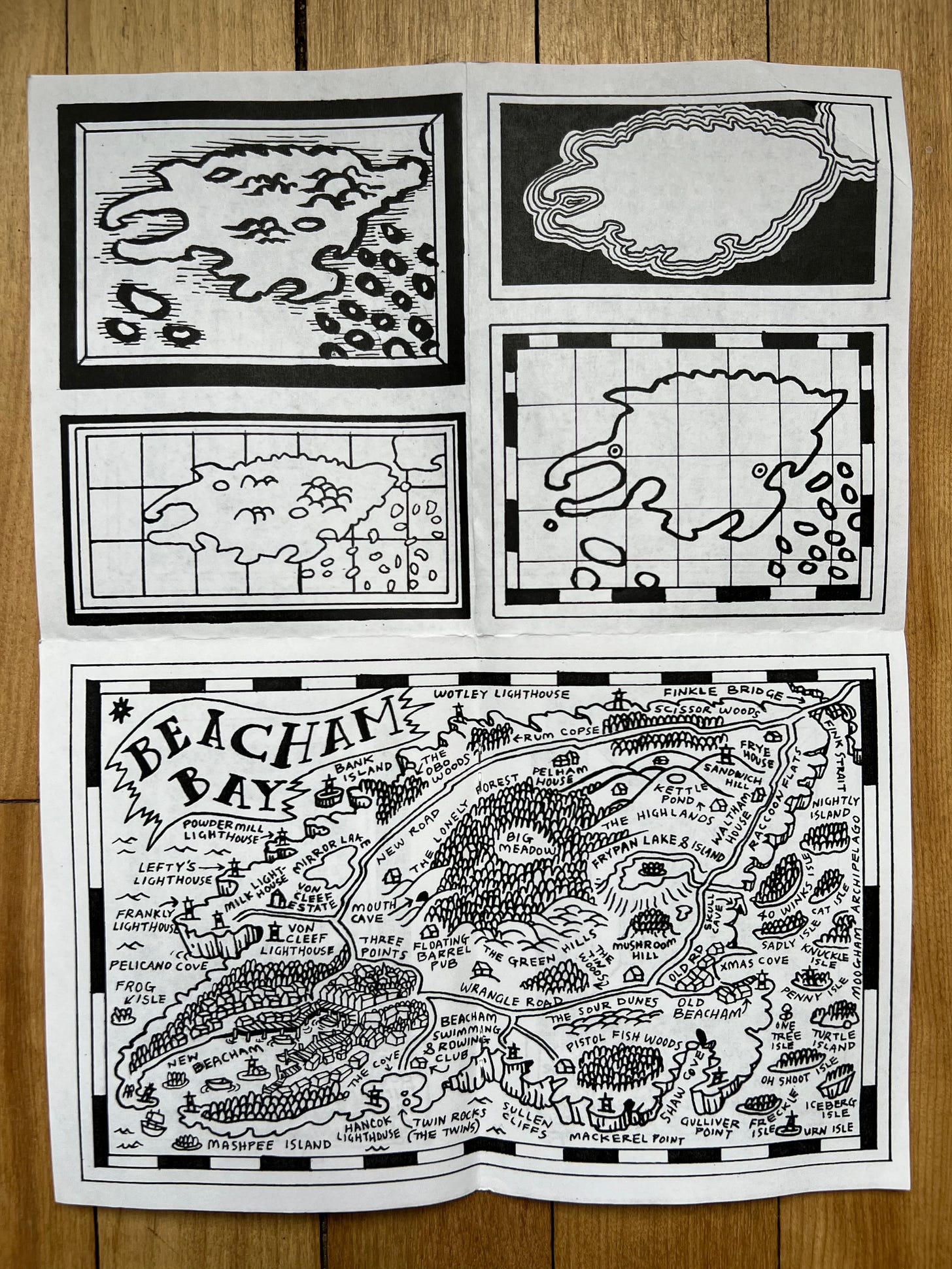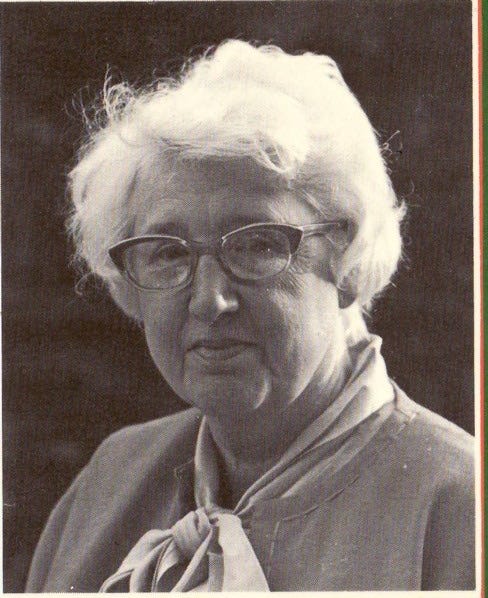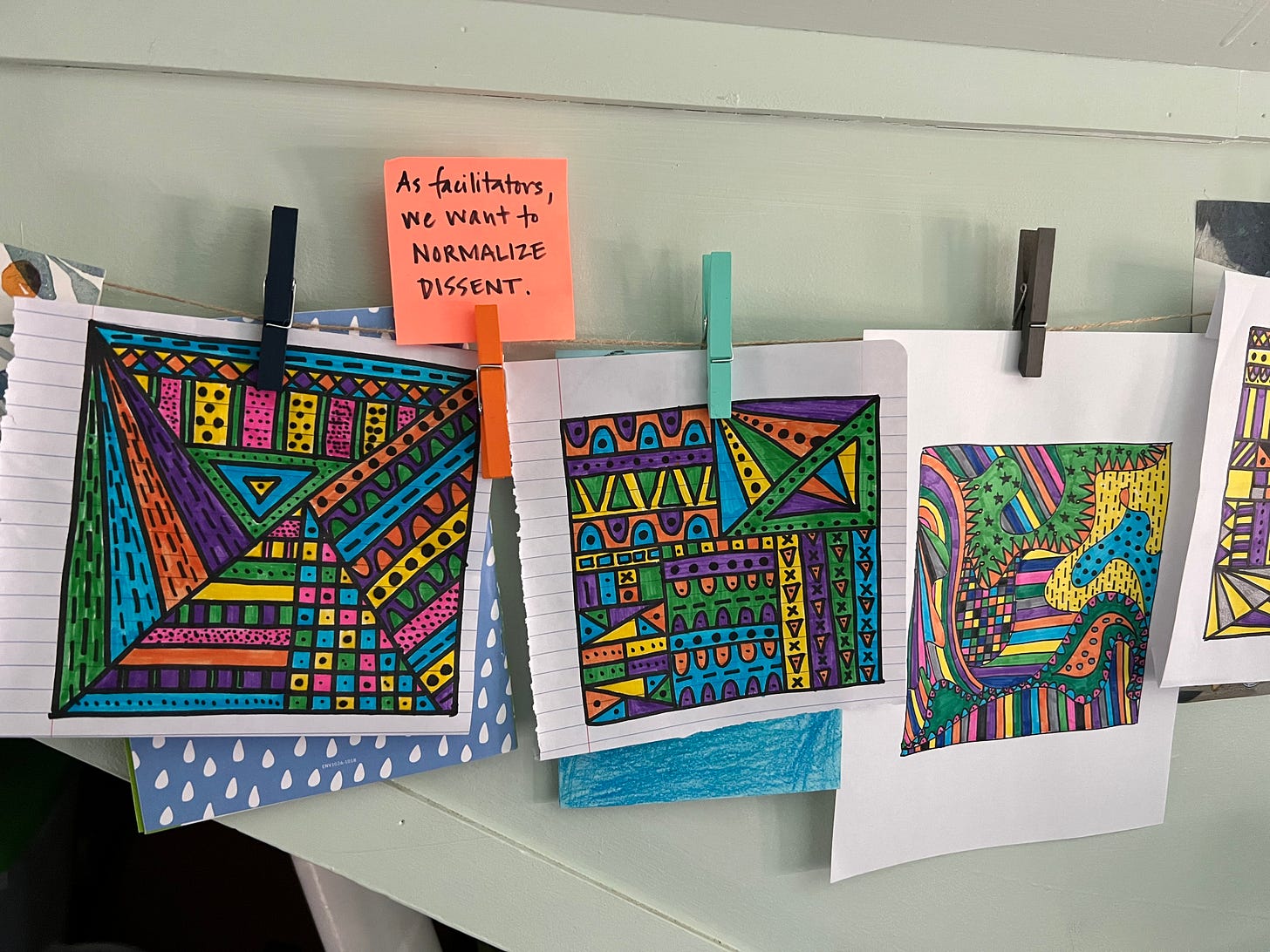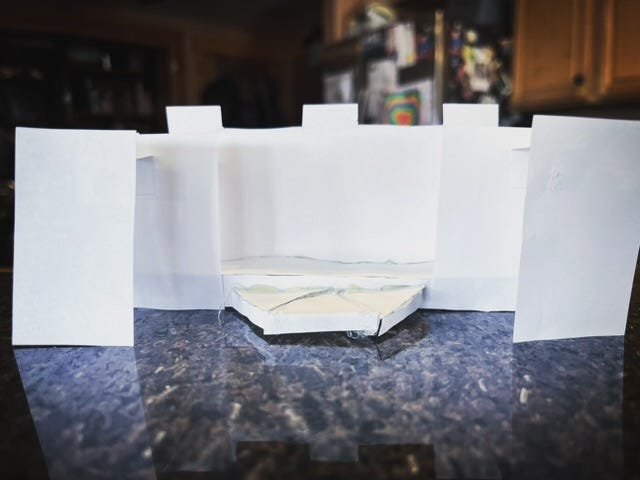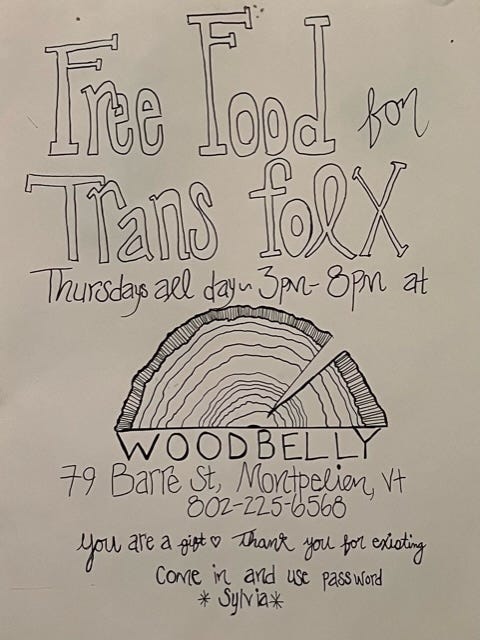The most important maps to me have never been real. I mean, they are real, they exist in reality, but they are not of real things or of real places. My earliest obsession of a map was from the movie Time Bandits, in which time traveling thieves stole a map that revealed how to access hidden doors in reality so that they could travel through time. When I saw the movie, I was 9 or 10. There was no way to search for the map pre-internet so I used to pause the movie (I had taped it off of cable, as I did with so many other movies and had amassed my own video store) so that I could redraw my own copy. I would use that copy to access doorways when I pretended to be one of the time bandits, which I did often. (Years later my colleague Rodney Ewing, with his booming voice, would often enter my classroom quoting The Supreme Being: “Return what you have stolen from me!” It made me jump every time and I would chuckle in relief that the supreme being was not out to get me.)
The map from Time Bandits, directed by Terry Gilliam, 1981
This fascination of fictional maps led to the love of actual maps of places in reality. Years later I fell in love with the vintage National Geographic Map of the Heavens, which I now have hanging in my studio. Although this map is of a “real” reality, look at the similarities:
The Heavens hangs on my studio wall and reminds me of the sky above and of the elusive Time Bandits map.
Probably around the same time I became obsessed with the Time Bandits map, I started to make a ton of art with my friend Mike House. He was a kid I connected with and most of our time together was living in imaginary worlds. He could really draw and I admired everything he made. I remember his drawings inspired from the movie Dune and I thought, man, I wish I could draw like that. We collaborated on a book that I still have to this day. It’s tattered and tired and barely held together with 39 year old scotch tape. It was a book of Kings that lived on islands. Each page was an illustration of a king and it contained a fold out map that lived in a pocket in the back of the book. We were, quite simply, mapping out our imaginations.
Kings The Book By Mike House and Brian Herrick 1984
Fold out Map from Kings The Book
From 2005-2010 I wrote and drew a graphic novel called Ebb and Flood, that I self published serially. After two of the three issues were done, I got stuck. I had some logistical questions about how characters were moving through the fictional landscape of Beacham Bay so I decided to make a map. The map ended up being the center piece of a mini comic which featured the ghosts of Beacham Bay. As I worked on the map, I was surprised to discover that the map itself was revealing other stories of Beacham that I had not yet “discovered”. This map was generating ideas as well as helping me solve problems.
Fold out map from Ebb & Flood #2 1/2: Ghost Portrtaits of Beacham Bay
David Mitchell wrote an excellent essay on how he uses maps to write his novels. It’s featured in a great book that I frequently get out from the library called The Writer’s Map: An Atlas of Imaginary Lands edited by Huw-Lewis Jones. I highly recommend it!
One of the strangest books I own is called Journeys of Frodo: An Atlas of J.R.R. Tolkien’s Lord of the Rings by Barbara Strachey. It’s out of print but you can buy it for an outrageous prize on Amazon or for much less on EBay. In the book, Barbara Strachey maps out Frodo’s journey across Tolkien’s mythical Middle Earth. She does this by using Tolkien’s hand drawn maps and cross referencing with the text (PAGE BY PAGE of all three books) of where Frodo went. On each page of the book, she creates her own maps in the style of Tolkien’s art, and includes a commentary to explain how she made her decisions. It’s wonderfully obsessive. What’s so strange and fantastic about it is her narration. She writes as if what happened in the pages of Lord of the Rings really happened. She points out Tolkien’s errors, as if he wasn’t paying attention to his own maps. It’s brilliant really and is a testimony to the importance of fiction and imagination in our lives. Tolkiens books obviously mean a great deal to her and her dedication to creating this book is nothing short of remarkable.
Tolkien fan and map maker Barbara Strachey
When I first started writing this article, I thought I would focus strictly on literary maps and then suddenly I began to notice that people around me were creating things that, although are not literally maps, felt reminiscent of maps.
This notion came from the idea that we often use “map” as a verb. To map out our day. To map out our path. To map our future. My friend Danielle recently wrote an amazing article in which she recounts mapping out her time, or her use of time rather, so that she can track her writing but also her life in general. You can read her insightful and helpful essay here on Catapult. Look how wonderfully visual her chart is. Dare I say it? She’s making maps.
Photograph courtesy of Danielle Lazarin from her Catupult article How To Track If You’re Writing “Enough”
Although this chart is of reality, in a sense she has created her own reality, one in which she gets to decide what is productive and what is not. She’s working through how she perceives time, and so these charts become maps or guides.
I recently met up with my friend Kate O’Brien in Portland, Maine and she talked about her recent doodles while having difficult, work related conversations on the phone. She said she’s had attachment issues her whole life and these drawings help her follow the process and give up on outcome. I’m not sure she sees them as maps, but she says they help her to move through discomfort. In that definintion I would say they were helping her move from one place to another, and in my opinion her drawings become maps which guide her on her way.
From Kate’s attic office, where she displays her drawings.
Since January I’ve been helping with sets at the high school. The kids are working on Puffs, a non Rowling endorsed satire of Harry Potter. The director, Kiana Bromley, who invited me to help out, sent me a photo of the maquette she made of how she envisioned the set would be mapped out. When I looked at her little model I was struck by the craftsmanship and thoughtfulness she takes in her work. This is a 3D map which helps visualize how the players move around the stage. For who all sit in the audience to watch this production, they may not think of her wonderful maquette sitting on her kitchen counter, but that’s where it all started.
Kiana Bromley’s Maquette for Montpelier High School’s production of Puffs by
In these examples, I’ve noticed how we all use visual representations to hep us navigate. I think a map is a visual representation of a landscape to be traversed. The landscape can be one in reality or a perceived mental or emotional journey such as an experience or a hardship. The map helps us to navigate this landscape.
I’m going to wrap this newsletter up with a painting from a recent series that I’ve been working. I’ve been obsessed with the notion of the grid for an while and my paintings as of late have integrated grids into them. What has helped me iterate this series is the notion that these paintings are maps of moments in nature: both of objects that live in reality and in my imagination. Breaking up the space and considering borders lead to them having a reference and a feel of maps. And like the friends I’ve mentioned in this essay, I’m mapping time, space, and the desire to make the process just as important as the outcome.
Lily Buds with Pink by Brian Herrick 2023
How do you use creative maps? If you have examples of how you use creative maps, send them along or drop me a line!
Artists and Maps
Julie Mehretu is the first artist that comes to mind who has used maps wonderfully but of course there are many more. This segment from Art 21, from a while back is a great look at Mehretu’s work.
About Town
This past week I hung a show of my most recent paintings at Woodbelly Pizza in Montpelier. I’m so proud to show there, not just because they have good food, but also because they are a community hub that pulls together amazing people, focuses on multiple perspectives and supports the entire Montpelier community. If you are in town, stop by for a slice of pie and check out my most recent work!
Have a listen!
Thanks for reading! Other ways you can support me:
Follow my YouTube channel and follow me on instagram.
Pick something up from my SHOP.
See you next time!

